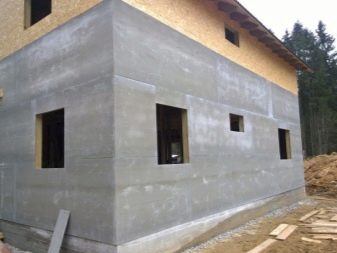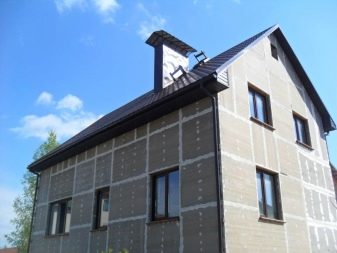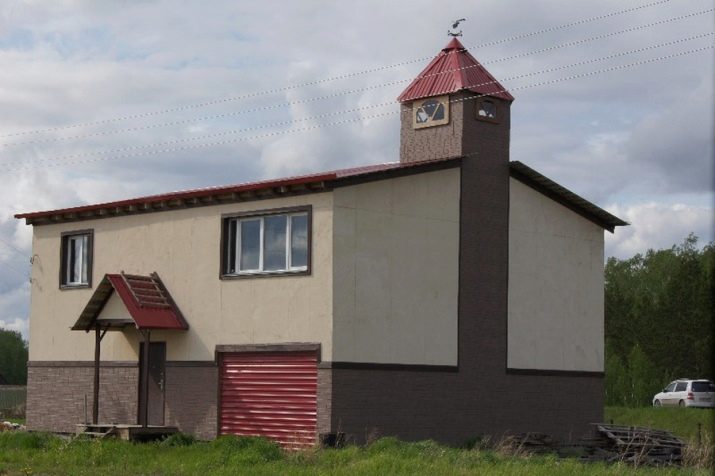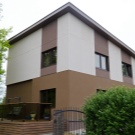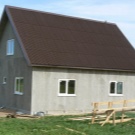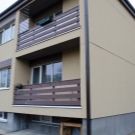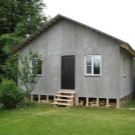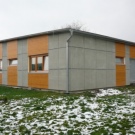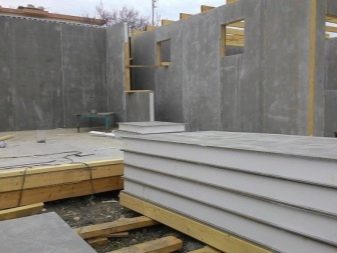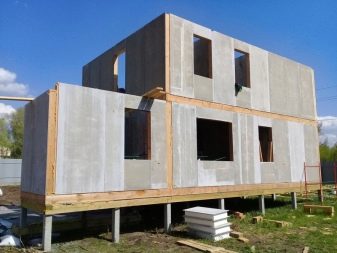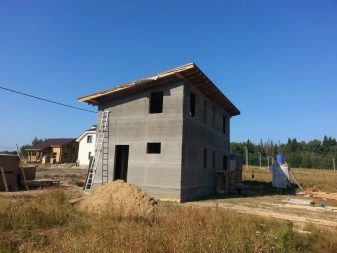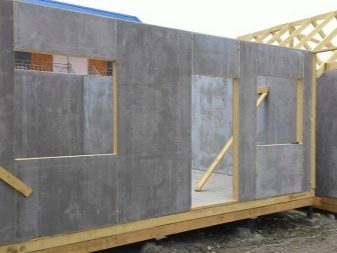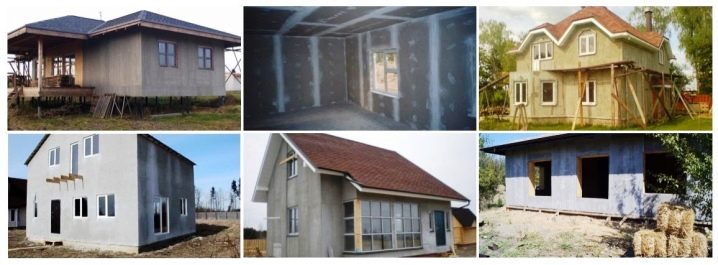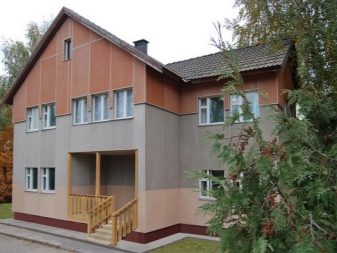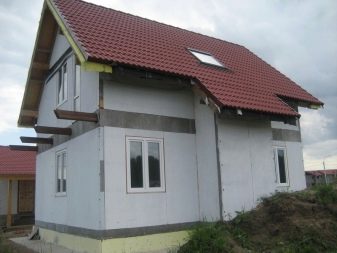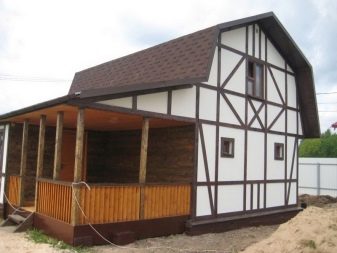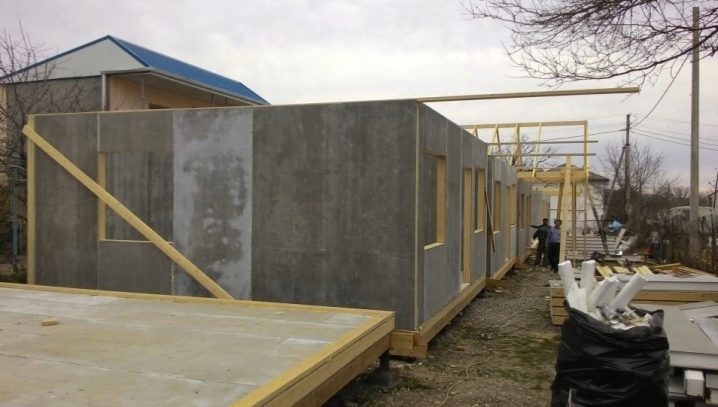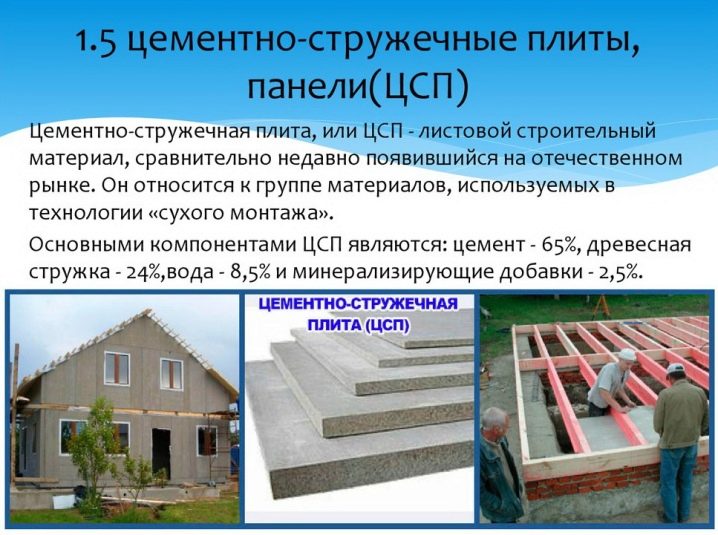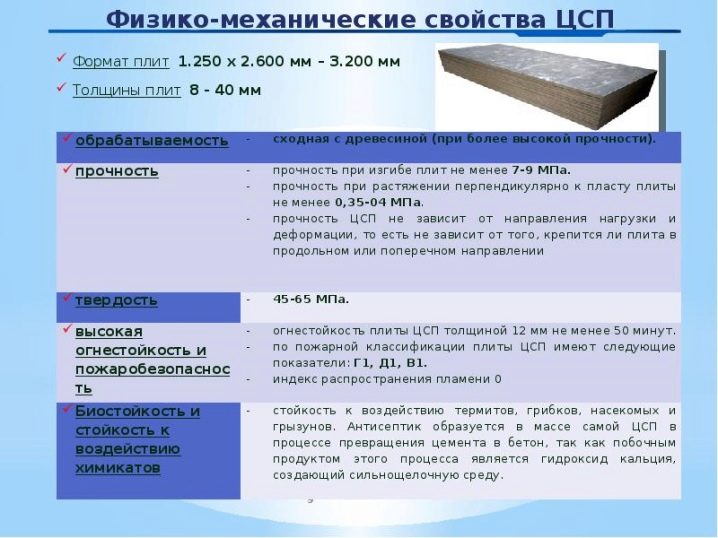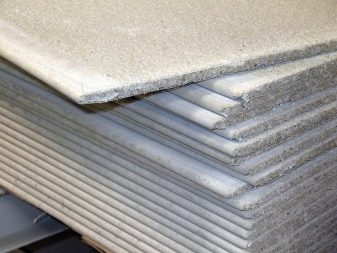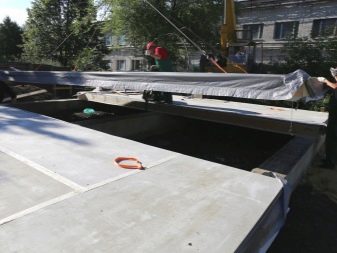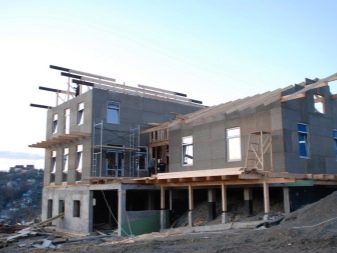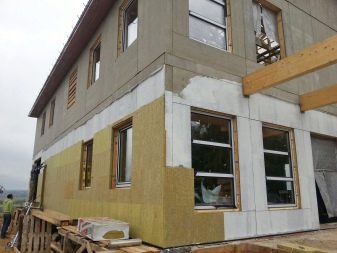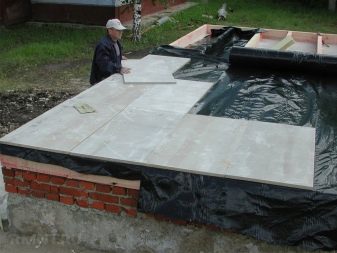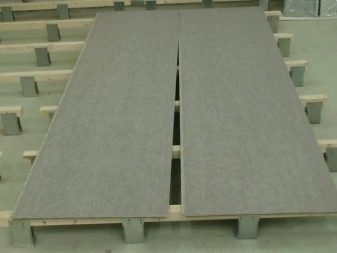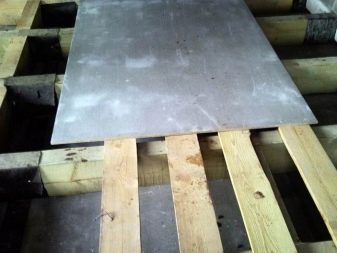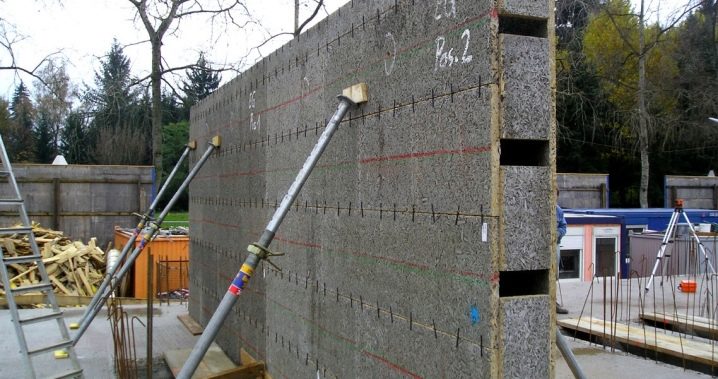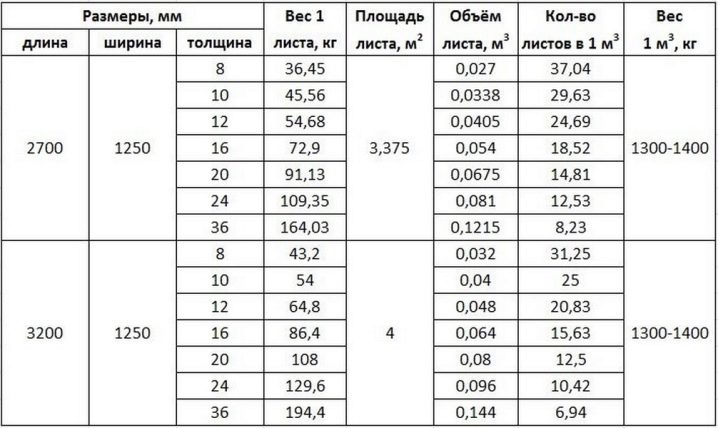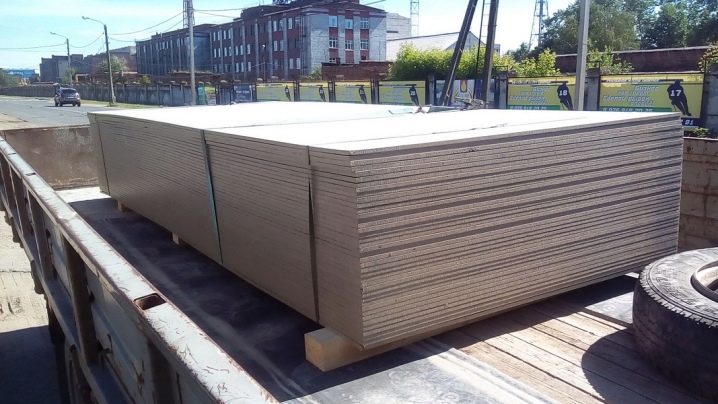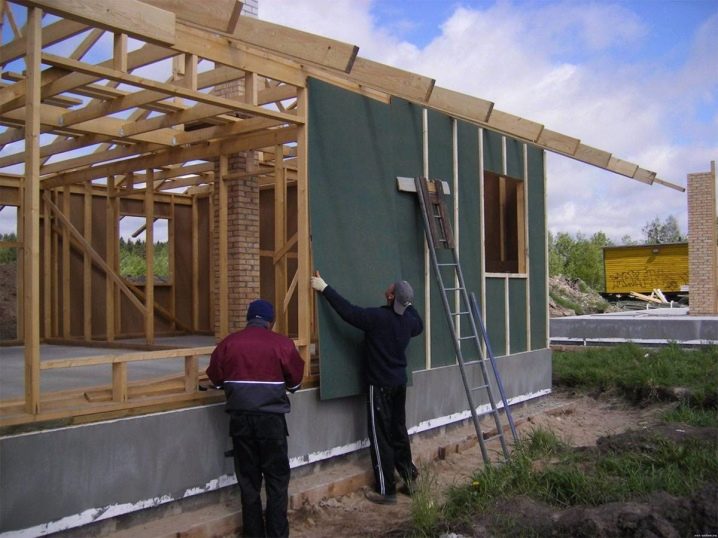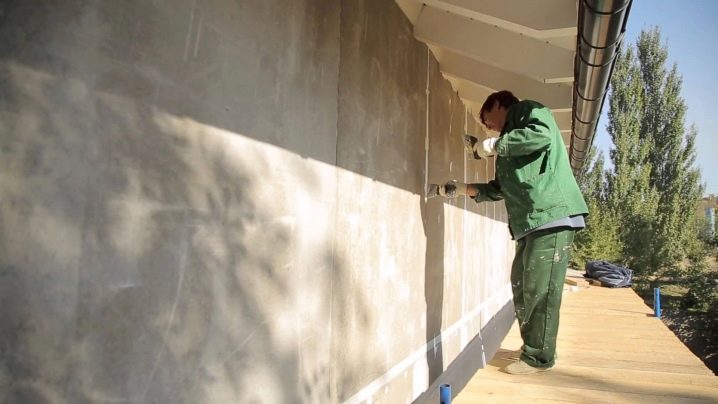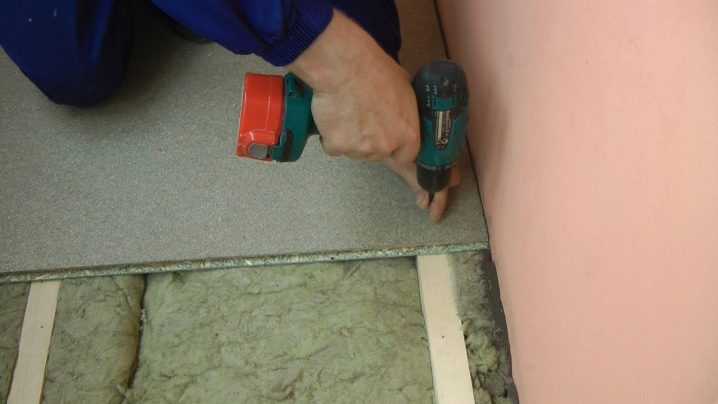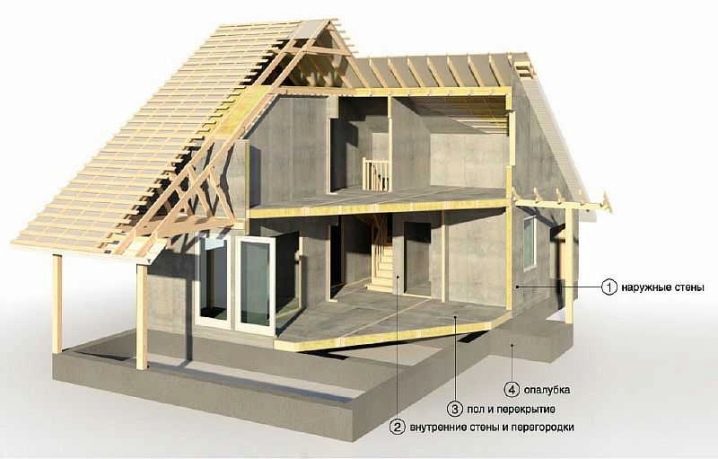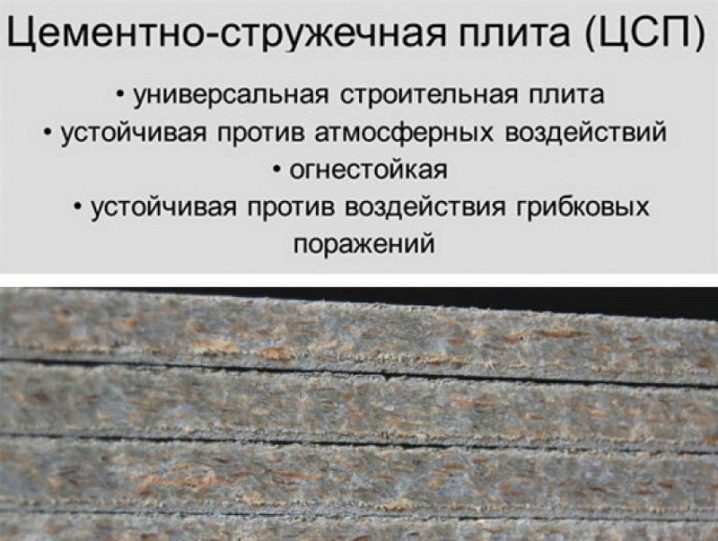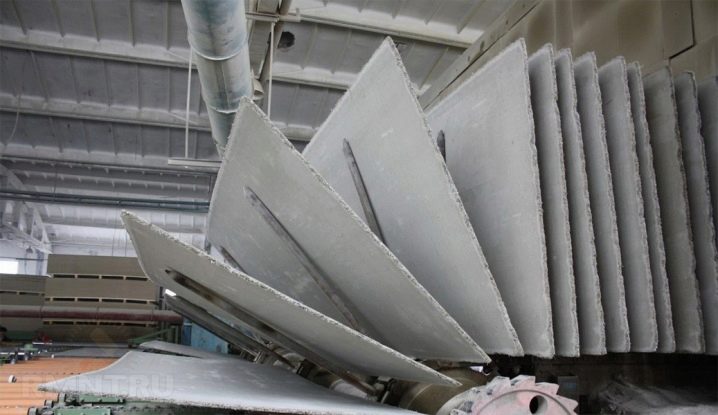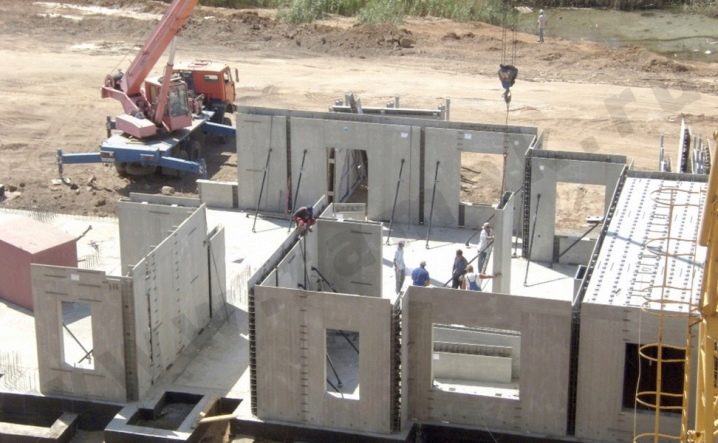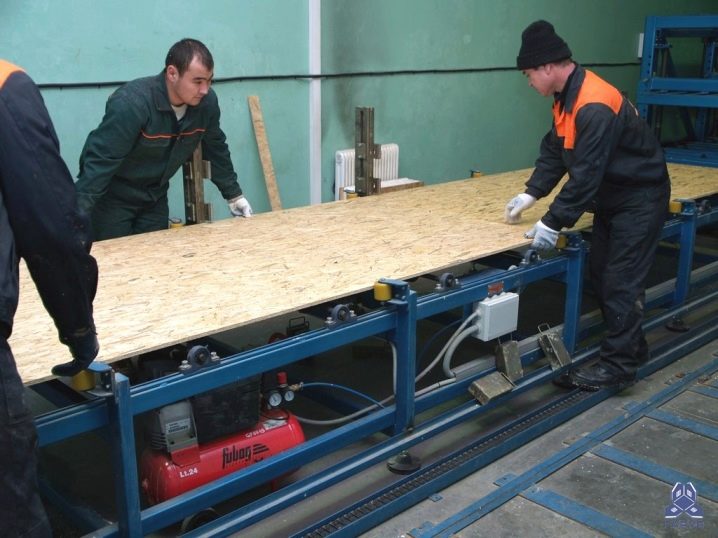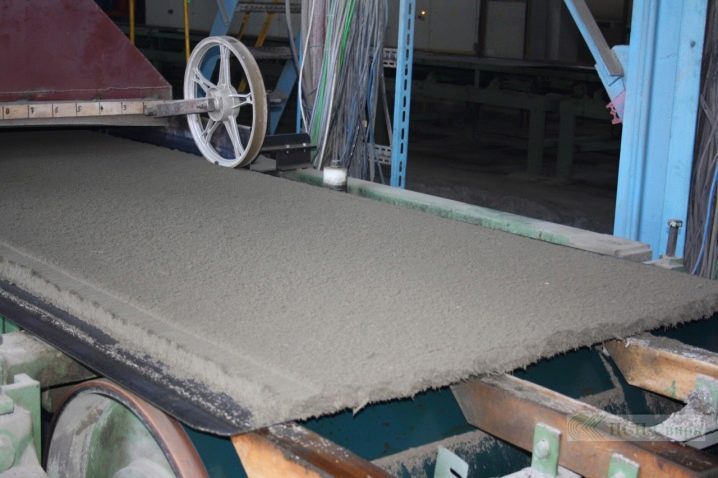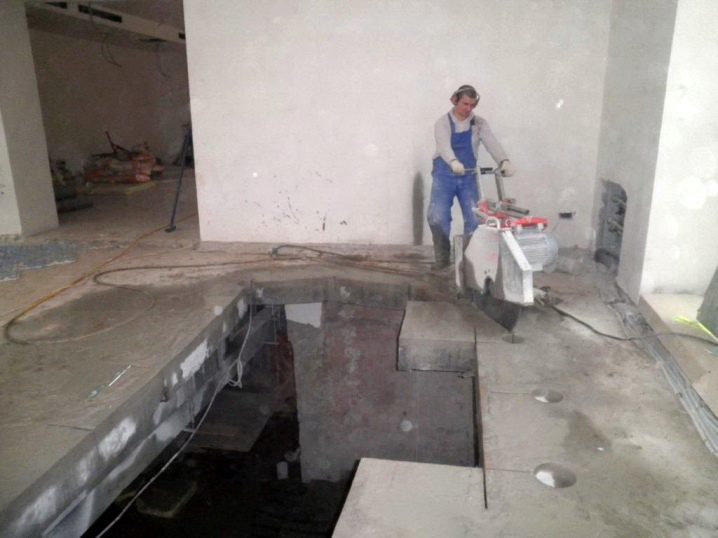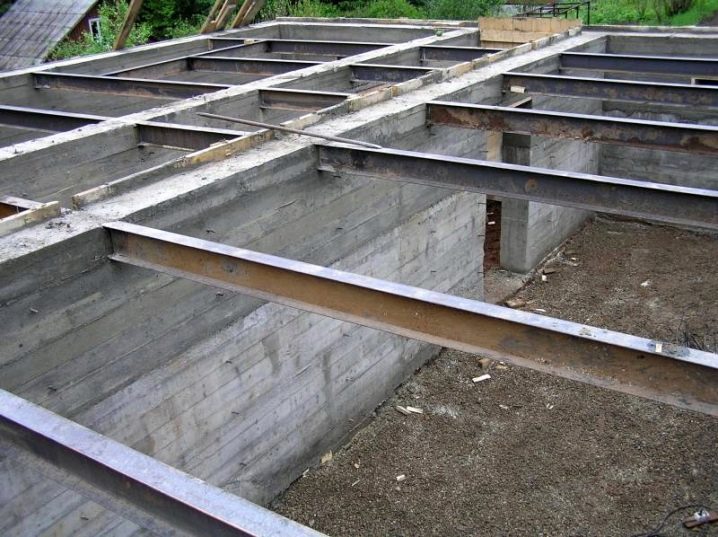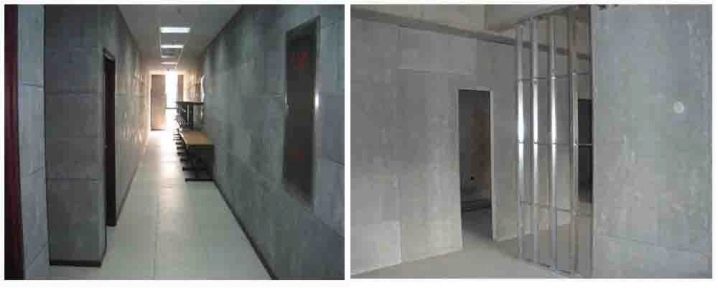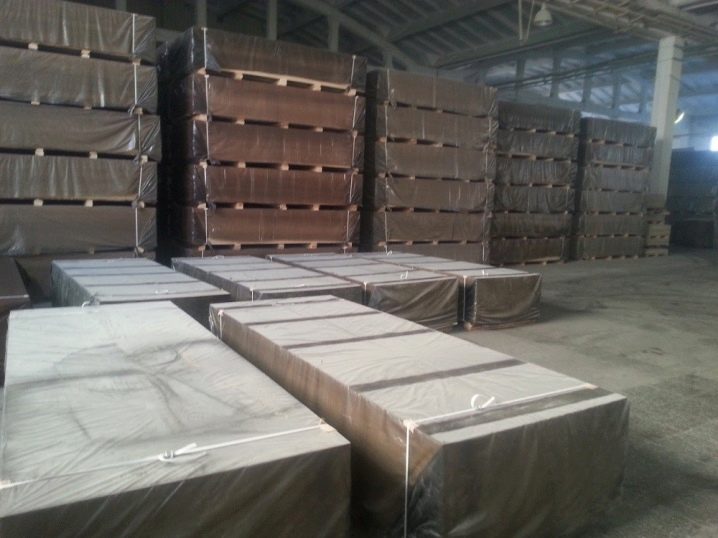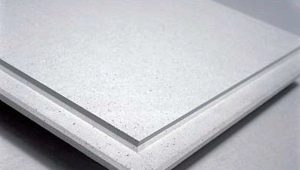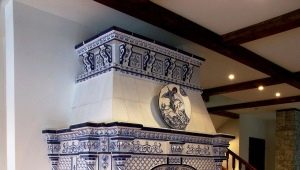Cement-bonded particle plate: pros and cons
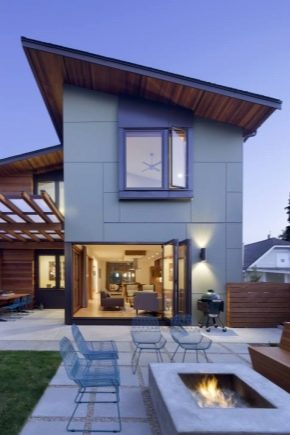
Cement-bonded chipboard is a construction material with unique qualities used in dry installation processes. DSPs belong to a number of advanced composite materials in the construction market, with features that combine the reliability and durability of cement with the elasticity and simplicity of wood processing.
Multipurpose technical properties and characteristics of DSP are appreciated and used in all sectors of construction around the world.
Special features
Thanks to its own highest technological and high-quality characteristics of the plate have an extensive scope and can significantly simplify the solution of many construction problems arising from the construction of buildings, carrying out repair work in the premises and solving architectural and design problems.
The use of sheets DSP provides an excellent opportunity to significantly reduce not only the material and time costs in construction and repair, but in addition to improve the heat and sound insulation of the premises.
The use of cement-bonded particle boards in construction is determined by the strength, environmental cleanliness and relatively low cost of this material.
The composition of the DSP includes natural substances based on mineral components, in connection with this plate is excellent for both internal and external construction works. In slabs, as well as in fiberboard, OSB or DSP, wood chips are considered to be a key underlying component. In addition, the composition includes cement, water and special additives, which makes the material more versatile to use.
This building material is an excellent replacement for gypsum fiber board, OSB and particleboard, it can be used for covering the exterior or interior walls of rooms, as well as for facing the surface, it is used as a screed for the floor or roof, make shielding facades.
DSPs are one of the best building materials and suitable for use in various weather conditions.conditions.
They are used in order to prepare the base and form a perfectly flat surface before finishing.
Blocks equally well suited for both external and internal construction work subject to further coverage of finishing materials. DSP is an environmentally friendly material that does not include toxic materials.
Advantages and disadvantages
The advantages of DSP are as follows:
- products are made from environmentally friendly materials in the form of sheets of different thickness, with high frost resistance and fire resistance;
- the plates are moisture resistant and heat insulation, which makes the use of products in demand for finishing work and on any surfaces;
- the addition of calcium hydroxide to products prevents the appearance of mold and fungal spores;
- the material has excellent resistance to deformation and can withstand quite heavy loads;
- perfectly amenable to cutting, cutting, drilling;
- product characteristics allow the use of plates along with materials such as wood, glass, metal and polymer elements;
- DSPs can be universally used in finishing works, because they are easy to install and economical;
- cement-bonded chipboards do not accumulate static electricity, do not interfere with the passage of electromagnetic fields of natural origin, according to the properties they are classified as heat-insulating and sound-proof materials.
The disadvantages of DSPs include the following:
- a large mass of slabs complicates their mounting on the upper floors of buildings without the participation of special equipment, which causes unnecessary material and physical costs;
- when operating on the street, the warranty period of service is reduced by 3 times.
Specifications
In the production of cement-bonded particleboard manufacturers adhere to the generally accepted standards of GOST, which are used for this type of building materials.
In particular, the following ratio of parts included in the product is used:
- crushed wood chips - 30%;
- water - 9%;
- Portland cement - 58%;
- additional impurities - 2.5%.
The technology for the production of plates is to create the basis of wood chips and cement. The method of manufacturing DSP panels is quite simple. A set amount of crushed wood chips, mineral materials, cement, water and water glass are put into a special drum. Intensively stirred until a homogeneous mass.
Form a plate of several layers, pressed and using a conveyor to send the intermediate into the chamber for subsequent hardening. As a result, the material produced is a monolithic slab that can not be stratified. An important advantage of such a composite is the complete lack of harmful volatile substances..
Cement particle boards have the following technical characteristics:
- the specific density of the product is 1100–1400 kg / m³;
- standard slab weight of 2,700x1250x16 millimeters = 73 kg;
- swelling afterwards of daily residence in water: height - 2%, length - 0.3%;
- sound insulation - 45 dB;
- thermal conductivity parameters - 0.26 W / mhK;
- the material belongs to slightly flammable substances;
- with standard humidity in the premises, the material can be used up to 50 years.
Finished plates have a holistic structure, which, under various external influences, does not stratify and does not crack.
Unpolished products are fire resistant (flammable) and must have a quality certificate, test report, limit, thermal conductivity and other characteristics.
Application area
The versatility of the plates makes it possible to use them in order to solve various construction tasks.
DSP is used for outdoor applications such as:
- construction of frame structures;
- finishing facades of apartment buildings, warehouses and hangar premises;
- use as a basis for the roof;
- trim balconies and terraces;
- use as not removable formwork for the construction of the foundation;
- used for insulation and the formation of fences;
- in laying the floor;
- during restoration works;
- in the manufacture of packaging and furniture;
- for fencing beds;
- when creating a roofing pie and building additional structures.
Plates are popular in the construction, manufacture of sandwich panels, insulation of basements and garages. They are used in the construction of fences, and in order to pave the tracks.
The panels installed outside or inside the building can be finished with plastering, painting, tiling, wallpaper. Linoleum, laminate, carpet covering can be laid on the plates used for floor installation and other materials.
The thickness of the DSP may be as follows:
- for interior walls is from 8 to 12 mm;
- for installation of walls - from 8 to 20 mm;
- for flooring - from 16 to 26 mm;
- for mounting formwork - from 12 to 56 mm;
- for exterior and roofing work - from 10 to 16 mm;
- for frame structures - from 10 to 40 mm.
Installation
Before using slabs in construction, they should be transported to the construction site. Should know that transportation is exclusively vertical. It is recommended to store sheets in horizontal position.
They are attached to the installation site in three zones by press washers. To do this, drill suitable holes. The only minus of cement-bonded sheets is fragility, therefore it is necessary to handle them carefully.
The most common type of finish plates is considered to be painted with silicone or acrylic paints or water-based paints.
The facade is finished by fastening sheets with nails, self-tapping screws, metal brackets or screws to the frame with bars or a metal profile. Acceptable sheathing step is about 60 cm. It is better to fix the bars in a vertical position, and on small areas you can use horizontal mount.Between the sheets, gaps of 4–5 mm are left, which prevents their deformation when the temperature of the atmosphere changes.
To fill the joints using an elastic resin or gasket. Outside, they are covered with factory slats or variants made from DSP scraps. The space between the wall and the sheets, depending on the purpose of the structure, can be left empty, or filled with insulation, which is a very important element of construction for apartment buildings.
Already after the fixture, the sheets are primed and put on decorative plaster or painted. To make the installation by hand, you will need to use the above scheme.
Due to the absolute lack of release of harmful gases and vapors during operation, DSPs are recommended for interior decoration of rooms, namely:
- used in order to align the walls - fixed in the frame of a rigid profile or in a special solution or mastic;
- they form internal piers, especially in conditions of high dampness — in order to increase the service life of such piers, it is necessary to subject it to treatment with a water-repellent agent and paint it with moisture-resistant paint.
Reviews
Feedback on the use of cement-bonded particleboard in various areas of construction work in the bulk is positive. And only in some cases, you can see insignificant flaws that do not relate to the quality of the plates, and more relate to factors that slightly complicate the installation process.
The key advantages of using DSPs are the following:
- increased strength;
- moisture resistance;
- good sound insulation;
- no toxic parts;
- heat protection;
- resistance to insects and rodents;
- possibility of operation in different weather conditions;
- acceptable price.
Consumers say that while they do not have to perform wet work, which are accompanied by large labor costs.
When laying sheets the master has to follow only the correct position of the canvas. Reviews of builders suggest that this material often has to be laid in the premises of bathrooms. He's great for that.
Reviews of professionals indicate an insignificant number of disadvantages of the panels:
- The heavy weight makes it difficult to transport and assemble the components, which delays the workflow a bit.
- Breaking in bends.In order to lay the slabs, an even base is necessary. It is preferable to buy building materials with a reserve of 15% of the planned budget.
- Negative factors may slightly affect the price of construction work.
Tips and tricks
For the purpose of high-quality surface treatment, DSPs use tools for cutting and drilling:
- Cutting. At cutting of plates on building sites apply hand saws and Bulgarian. To obtain a smooth edge, it is necessary that the cutting disc protrudes beyond the lower plane of the sheet for the minimum possible period. Sheet cutting is performed from the reverse edge in order to save the front side of the sheet from mechanical damage.
- Drilling. For drilling holes in the plates using hand drills or a drill with electric adjustment of turns. For the purpose of drilling individual holes, it is allowed to use twist drills from the cutting material. For continuous operation, drills with hard alloys are recommended.
- Milling. For milling plates can use manual and electric mills, equipped with a solder with a hard metal alloy.The frequency of rotation of the cutting device should be up to 35 m / s.
- Grinding. When mounting slabs on butt welds, small bulges may appear that need to be removed by grinding. For this purpose, manual vibration, eccentric or belt grinding mechanisms are used. The granularity of the ground material should be up to 80 units. It is important to note that during grinding there is a violation of the outer, finely dispersed covering layer, which leads to a violation of the texture of the plate itself, an increase in moisture absorption and a deterioration of the physicomechanical qualities. Already after completion of the slab treatment, a primer should be applied in order to stabilize its surface and reduce its hygroscopicity.
When machining sheets (grinding, cutting, drilling), large amounts of dust are always produced; for this reason, specialized dust extraction equipment and personal protective equipment should be used.
Without exception, all mounting elements and metal components of the supporting systems must be treated with an anti-corrosion coating.. Immediately before fastening the plates, one should make sure that the frame elements are vertical and horizontal, and that they remain at the same level. Without exception, all the planes and edges of the plates should be primed with a special solution prior to attachment.. Particular attention should be paid to priming the edges.
If during repair work it is required to bypass the pipeline system, then a solid oil should be applied to the element with an equal diameter and applied to the required part of the plate. This will give the opportunity to mark the edge for cutting.
You can perform cutting work using the "crown". In case it is necessary to cut an opening, which has large dimensions and uneven edges, it is recommended to make an incision, adhering to the borders, and only then carefully knock out the element with a hammer.
Cement struzhechnye plates are fixed to the bearing systems with screws and rivets. In order to ensure technologically correct fastening of sheets, the main condition is considered to be a uniform shutter speed between fasteners. and the distance between the elements for fasteners and the edges of the plates.
For mounting DSP without resorting to pre-drilling, you can use special screws with a durable tip and hidden cap, equipped with blades in order to create holes for its scale.
The size of the screws and screws is selected with the condition that the length of the squeezed part is not less than double the thickness of the sheet and not less than 10 volumes of the screw.
When screwing screws do not need to exert excessive force to avoid cracking of the plate.
When using DSPs for the purpose of facing walls, walls or ceiling, they should be laid with a seam, the width of which is from 6 to 8 mm for outdoor and from 3 to 4 mm for internal use. The connection is allowed to cover the outer plank and put a wooden, tin, steel or polymer profile, or hammer elastic putty on the basis of acrylic resin.
Cement-bonded chipboards, as well as other materials from wood chips, undergo insignificant expansion and shrinkage under the influence of temperature and moisture differences. At the joints of the sheets should be left a gap for thermal expansion, allowing for the linear expansion of wood.
In order to prevent the creation of cracks in the mixture for sealing seams, the width of the compensating seam should be about 8 mm for the exterior and 4 mm for internal use. Cement-bonded chipboards come from the factory with a moisture level of 9 ± 3%. Warehousing before processing and installation must be carried out in appropriate conditions in compliance with all technical regulations. If this condition is violated, plates may be absorbed by a high amount of moisture, which may actually cause defects in closed joints or in fastening areas, as well as damage to the finish on the surface of the sheets.
The design of the end borders of the DSP and the seams are diverse. When using slabs from outside buildings and for wall cladding, it is not recommended to grind the surface of the slabs, except for the situation when the ground plane is taken into account by special conditions. Polished plates, in which wood particles are directly visible on the surface, are used for flooring, and in special cases.
Regardless of the methods used for surface finishing of sheets, the indispensable priming of their surfaces and edges is necessary. Used edges of plates primed prior to installation. Cement-bonded chipboards can be confidently recommended for construction work, especially if they have a fire resistance limit. However, it is recommended to select high quality products and only from a trusted manufacturer.
On the features of the production and application of DSP learn from the following video.

